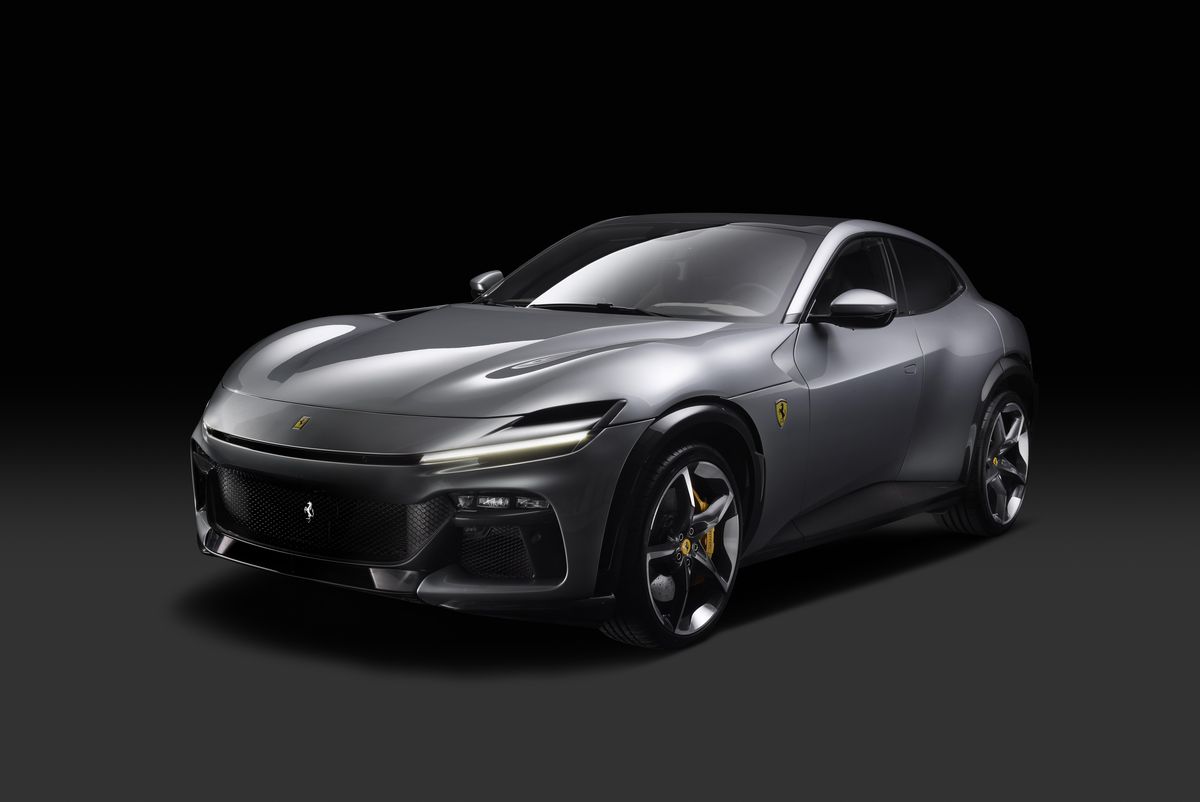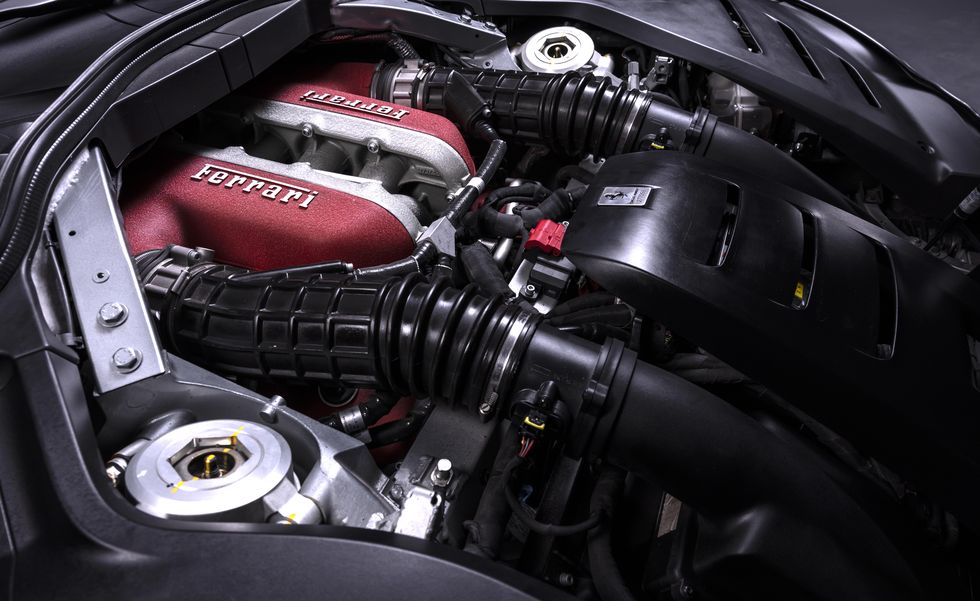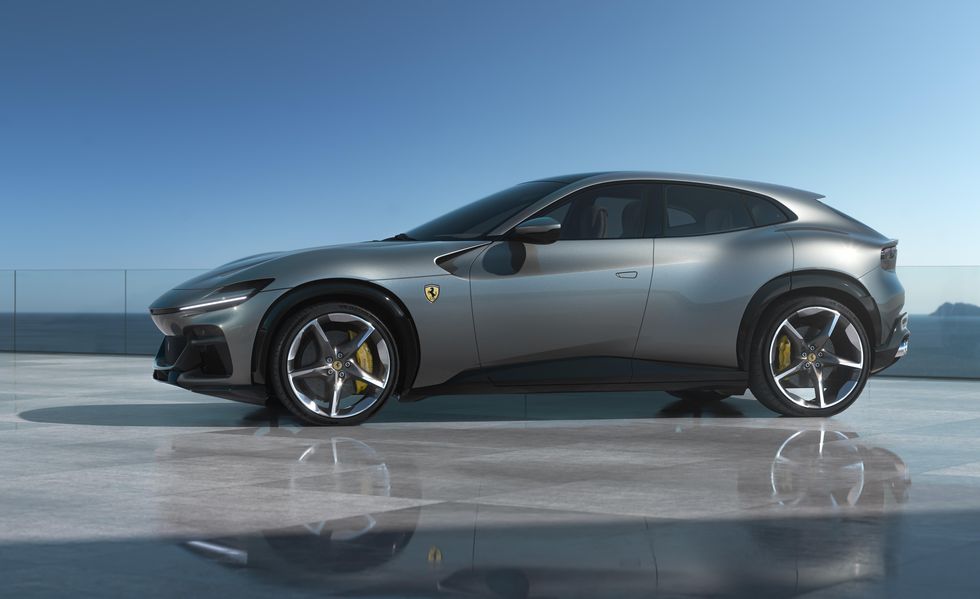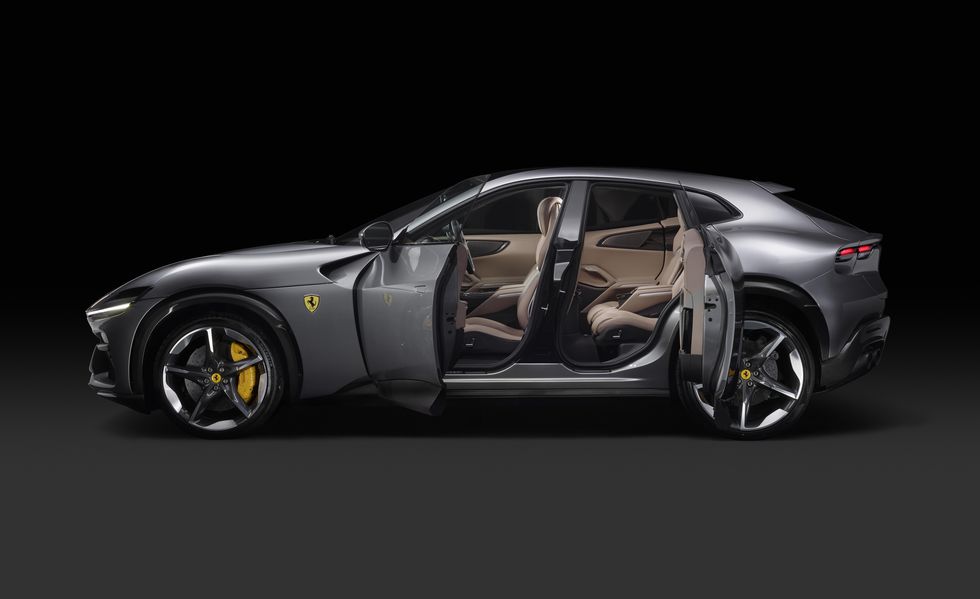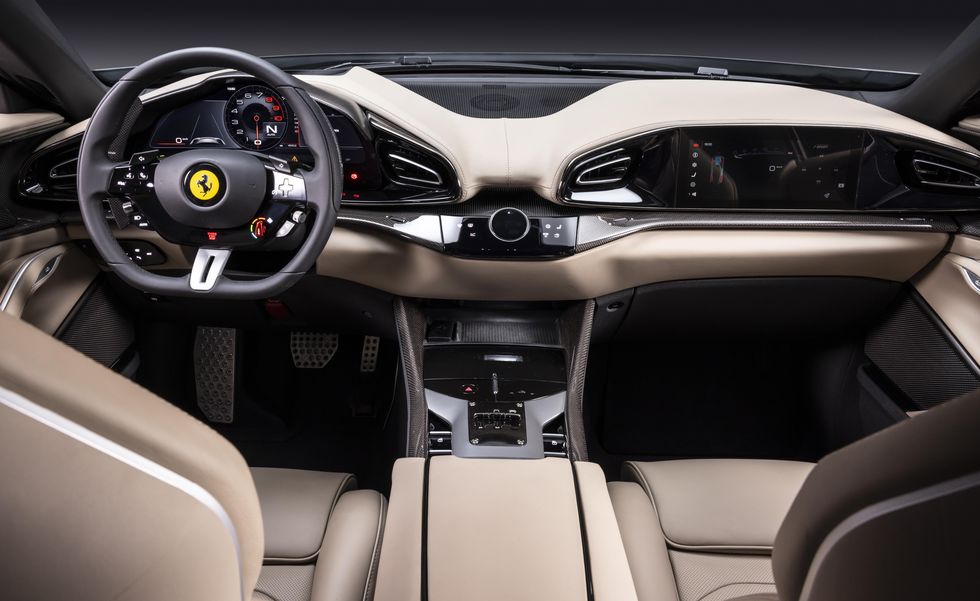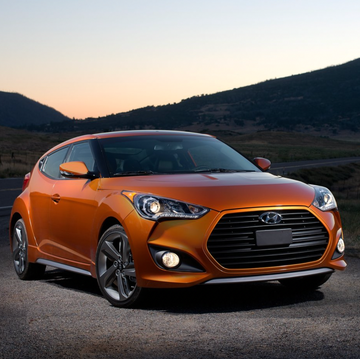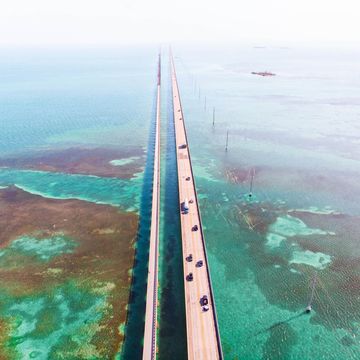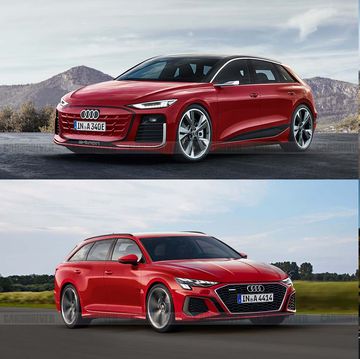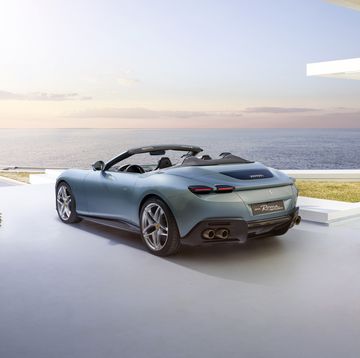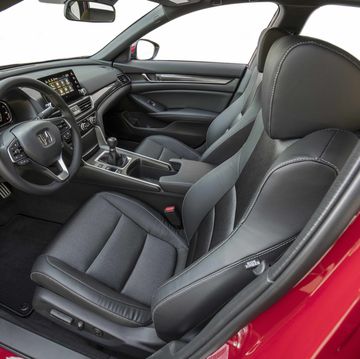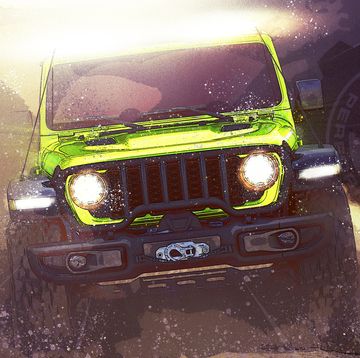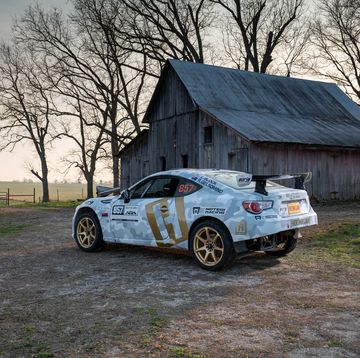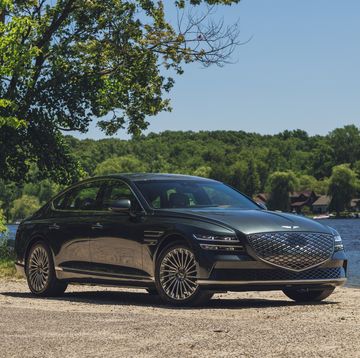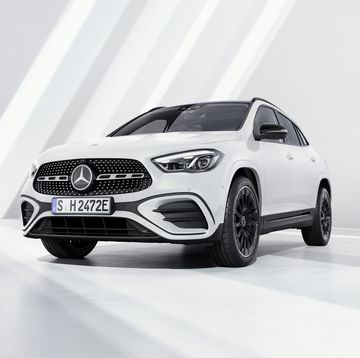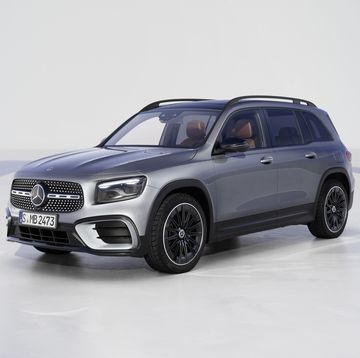- Ferrari has finally revealed the 2024 Purosangue, its long-awaited entry into the SUV segment.
- The Purosangue comes standard with a naturally aspirated V-12 engine that produces 715 horsepower.
- It's a four-seater with rear-hinged rear doors to aid access to the rear seats.
Over the course of its illustrious history, Ferrari has built sports cars in many different configurations. There are front-engine four-seaters with V-12s, mid-engine two-seaters with V-8s, and even more recent aberrations including an all-wheel-drive shooting brake and a hybrid with a V-6. But we can guarantee that you’ve never seen a Ferrari quite like the 2024 Purosangue. As the first four-door vehicle ever adorned with the prancing horse badge from the factory, this is the company's long-awaited entry into the unavoidable ultra-luxury SUV segment.
Of course, Ferrari doesn't like to call it an SUV, instead referring to this new model as an extension of its sports car lineup with a new form factor meant to enhance versatility and comfort. To emphasize that it's just as much of a Ferrari as any other, the project's code name, Purosangue (meaning “pureblood”), will be retained for the production model seen here that will reach U.S. customers starting in late 2023.
Engine and Performance
Also ensuring its place in the Ferrari bloodline is the fact that it will be available at first with only a single powertrain: a 6.5-liter naturally aspirated V-12 engine that revs to 8250 rpm. Its power output of 715 horsepower puts it well above the Lamborghini Urus Performante's twin-turbo V-8, but the nonturbo V-12 falls behind its boosted competitors in terms of torque, with only 528 pound-feet. Ferrari says that 80 percent of that torque will be available at 2100 rpm. But, with the power peaking at 7750 rpm and the torque peak sitting at 6250 rpm, the Purosangue is sure to be a revvy machine.
Based on Ferrari's dry weight figure, we estimate the Purosangue will have a curb weight of close to 5000 pounds. Performance estimates place it near the quickest SUVs we've ever tested; Ferrari claims it will accelerate to 62 mph in 3.3 seconds and go on to a top speed of 193 mph.
The transmission is an eight-speed dual-clutch automatic, and the unusual all-wheel-drive system is the same one introduced on the FF and later used in the GTC4 Lusso. It only operates in the first four gears and up to around 124 mph; above that, it's a rear-driver. Rear-wheel steering is standard, and so is the same Side Slip Control system from other Ferraris that manages the traction control, stability control, and ABS programming.
New Suspension System
Ferrari is particularly proud of the Purosangue's new suspension technology, saying that this is the crucial component that allows such a tall, large, and heavy vehicle to meet the company's high standards for handling performance.
The setup uses active spool-valve dampers from Multimatic, the same company that supplies non-active adaptive dampers for certain performance versions of the Chevy Camaro and the off-road-oriented Colorado ZR2. But these new units in the Ferrari go a step further and replace the need for anti-roll bars thanks to an electric motor at each corner that can apply force to the dampers to control body motions. The suspension can also lower the car by 0.4 inch during hard cornering, but there's no way to raise the ride height beyond the standard ground clearance of 7.2 inches, underlining the fact that the Purosangue is not meant for any sort of off-roading. The staggered wheel and tire setup features 22-inch, 255-width rubber up front and 23-inch, 315-width tires in the rear.
Unusual Design
With a long, low nose and a rising character line that creates a wedge-like silhouette, the Purosangue's proportions are more reminiscent of the GTC4 Lusso's than any of its taller SUV rivals. Ferrari designers say they intended for there to be a clear separation between the upper body and the lower body. The upper section is meant to be smooth and elegant, and the lower section—consisting of an aggressive rear diffuser and wheel-well cladding that can be finished in either carbon fiber or matte black—is intended to communicate the car's power and capability. The separate elements help reduce the Purosangue's height visually, but the design lacks coherence, as there are many stylistic elements competing for your attention.
The front end, for instance, tricks you with its headlight cutouts that really aren't headlights at all. Instead, the scooped-out elements near the hood cutline are air intakes, and the lighting strips bisecting these intakes serve as daytime running lights and turn signals. The actual headlights are further down, flanking the lower air intakes. We'll leave final judgment on the Purosangue's looks to you, and we're curious how it will look in different color combinations, of which there will be many, as Ferrari plans to let customers order their vehicles with a wide range of customization possibilities inside and out.
Oh, and the Purosangue also has front-opening rear doors, just like a Rolls-Royce. There's still a B-pillar, but Ferrari says this configuration aids ingress and egress to the rear seat. Engineers also said that it allowed them to increase the impression of space inside without having to stretch the wheelbase too much. Two individual rear seats are standard, meaning the Purosangue is strictly a four-seater. The cargo area measures 17 cubic feet, and the rear seats fold flat to expand that capacity.
Interior and Features
The dashboard incorporates the same digital displays from other Ferrari models, including a 10.2-inch digital gauge cluster for the driver and a screen for the front passenger; there's no central infotainment screen. The steering wheel features the familiar Mannetino drive-mode controller, along with many other buttons and knobs. Various combinations of leather, Alcantara, and carbon-fiber trims will be available. A carbon-fiber roof is standard, but you can also opt for a glass roof with electrochromic tint adjustments.
When it goes on sale late next year, the Purosangue won't be an easy commodity to acquire. Not only will its base price likely sit near $400,000, but many examples are spoken for, as existing Ferrari owners were already offered first dibs months ago. Ferrari says it does not want the Purosangue to make up more than 20 percent of its overall sales, meaning demand will far outpace supply. Ferrari likes to say that it's aiming to provide "different Ferrari for different Ferraristi." And this is definitely a different kind of Ferrari.
Despite being raised on a steady diet of base-model Hondas and Toyotas—or perhaps because of it—Joey Capparella nonetheless cultivated an obsession for the automotive industry throughout his childhood in Nashville, Tennessee. He found a way to write about cars for the school newspaper during his college years at Rice University, which eventually led him to move to Ann Arbor, Michigan, for his first professional auto-writing gig at Automobile Magazine. He has been part of the Car and Driver team since 2016 and now lives in New York City.
